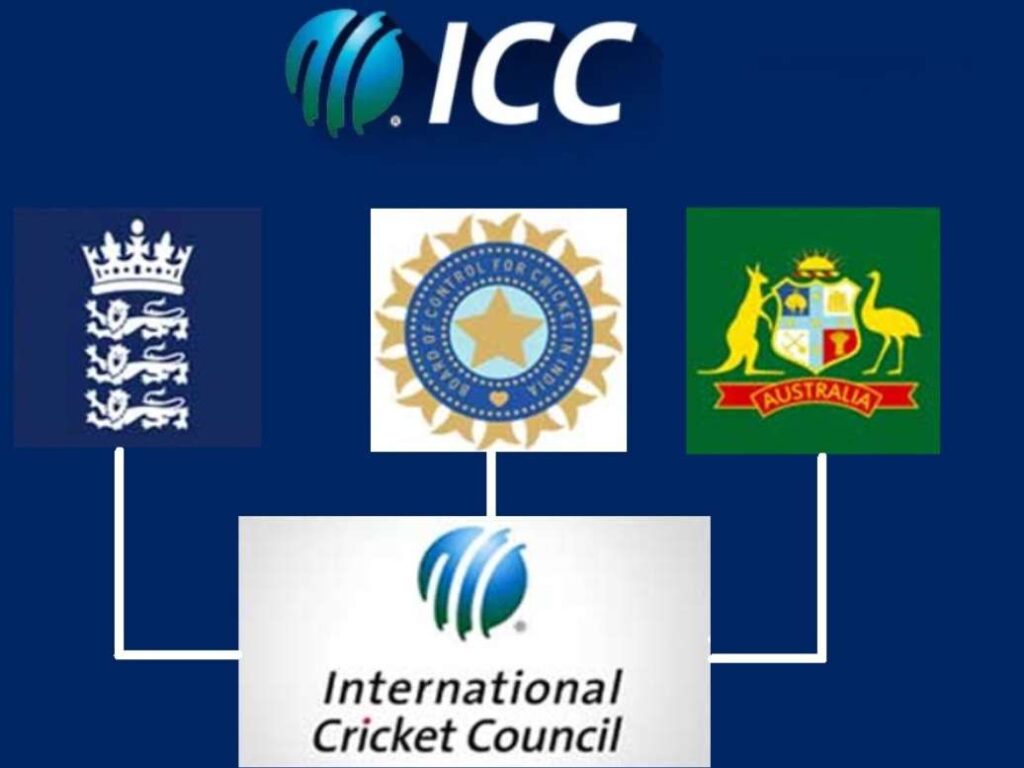
ICC is a nonprofit cricket Governing council. The ICC generates income from the tournaments it organizes, primarily the Cricket World Cup. And it distributes the majority of that income to its members. ICC Revenue Sharing Model is based on 8 years cycle period. The latest model was purposed in 2015. It commends from 2016 and end complete its cycle in 2023.
Key Takeaways:
- The shares of the BCCI and the ECB in the ICC’s revenue pie have reduced
- ICC revenues for this rights cycle – 2016-2023 – are estimated to be around the US $2.5 billion to $2.7 billion.
- BCCI Objection over the new ICC Revenue Sharing model.
ICC Revenue Sharing Model
ICC earns money from its Global tournaments (ICC events).
Their major earning is in Gate receipts for these tournaments. ICC also earn revenue by selling their media right, sponsorships, and licensing rights. The various national boards also pay the ICC.
However, ICC has no income streams from bilateral international cricket matches (Test matches, One Day Internationals, and Twenty20 Internationals). It accounts for the great majority of the international playing schedule, as they are owned and run by its members.
In 2015, ICC purposed a new revenue model for the next 8 years time period effective from 2016. ICC revenues for this rights cycle are estimated to be around the US $2.5 billion to $2.7 billion.
According to the new financial revenue model. The Board of Control for Cricket in India (BCCI) will receive US $405m of the income over an eight-year period spanning from 2016-to 2023. As they have a 22.8% profit share. However, This revenue share is still $165m less than what the Indian cricket board had received during the previous cycle.
Breakdown of ICC Revenue Sharing Model :
According to the new financial sharing model, ICC revenue breakdown by country is:
| ICC member | ICC Revenue share |
| India | $405m |
| England | $139m |
| 7 other full members | $128m each |
| Zimbabwe | $94m |
| Associate nations along with Afghanistan | $240m collective funding |
ICC Revenue Sharing Model 2016-2023 Board Wise:

| Details | Share |
|---|---|
| ICC Total Expected Revenue | $2.5-2.7 Billion |
| BCCI | $405m |
| ECB | $139m |
| CA | $128m |
| PCB | $128m |
| CSA | $128m |
| NZC | $128m |
| WICB | $128m |
| SLC | $128m |
| BCB | $128m |
| Associate Members | $240m collective funding |
BCCI | The Board of Control for Cricket in India (BCCI) receives a large share of the ICC’s revenue, $405 million from the current cycle to be exact.
ECB | The England and Wales Cricket Board (ECB) gets the second highest share. The ECB is getting $139 million.
7 other full members | The cricketing governing bodies of Australia, Bangladesh, South Africa, West Indies, Pakistan, Sri Lanka, and New Zealand receive $128 million.
Zimbabwe | Zimbabwe isn’t part of the Test Championship. So Zimbabwe Cricket is getting less money than the third set of boards $94 million.
Associate nations along with Afghanistan | Associate nations along with Afghanistan and Ireland will receive collective funding of $240m. Currently, there are 94 Associate Nations.
BCCI vs ICC
When ICC Purpose’s new revenue model, BCCI stated their concerns as the new revenue share is $165m less than what the Indian cricket board had received during the previous cycle.

In that model, for gross ICC revenue of $2.5 billion, the BCCI stood to earn between 17.6-18% of the revenue (between $440-445 million). In the new model, at the same gross revenue, it gets 10-10.2%. That is a reduction in potential earnings of between $180-190 million.
The Big Three take a hit

In the new model, the percentage shares of the BCCI and ECB in the total pie have gone down, while that of CA remains roughly the same.
BCCI is unhappy with these models as they lost roughly around $150-180 million. The Indian board takes the biggest hit from the 2014 model. However, BCCI shares will increase as the ICC’s total gross revenue increase.
Under the 2014 model, the ECB stood to take 5.8-6%, whereas now its share is 4.8-5%, or between $20-30 million less.
CA’s share was between 4.4-4.6% in the last model and is more or less the same now.





